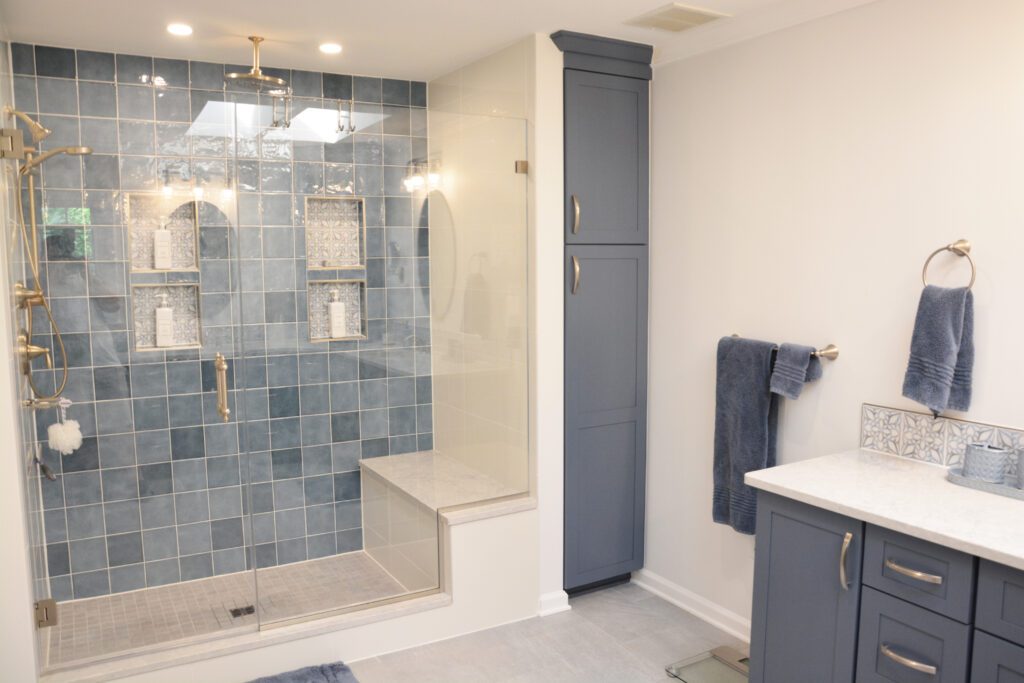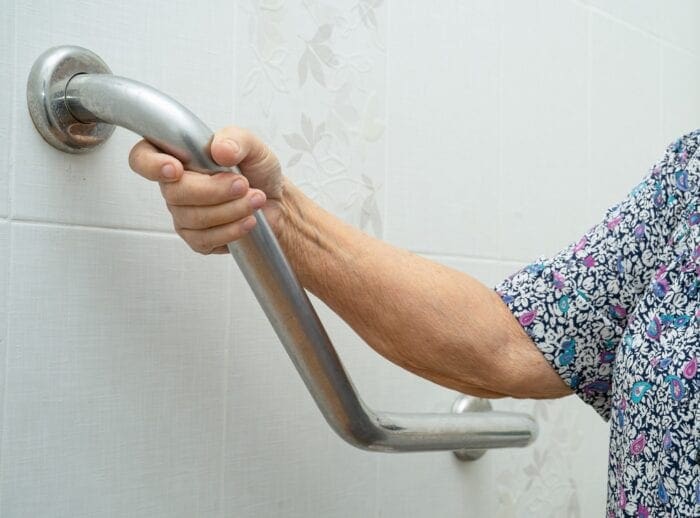The bathroom is one of the most important rooms in your home. Everyone who lives there should be able to use it comfortably and safely. If you or someone you live with is a wheelchair user, there are modifications you can make while remodeling your bathroom to make it more accessible. Cabinet Discounters offers advice for customers remodeling their bathroom to make countertops, cabinets, and other hardware accessible for wheelchair users.

1. Reimagine sink space
Sink and vanity space are major components of your bathroom that shouldn’t be overlooked during remodeling. To make the sink more accessible to wheelchair users, pay attention to the positioning of your sink. The sink should be at a height such that a person can use it while in a wheelchair.
You should also avoid putting cabinets below the sink so that there is room for an individual’s knees while using a chair to approach the sink comfortably. If you have a vanity area in your bathroom, you will want to choose a sturdy countertop. There should be no issues if it is grabbed for balance or movement.
2. Strategize storage
Bathrooms are good place to store everyday items, like a hairdryer, dental supplies, and towels. A linen closet or cabinets should be constructed with care when remodeling with wheelchair accessibility in mind. For example, install drawers that don’t need a lot of force to pull out.
Ideally, these should be at a height comfortable for individuals to access while in a wheelchair. These drawers are an easy way to reduce clutter if the space is small. Additionally, you should place common bathroom hardware, such as toilet paper holders, towel bars, and soap dishes, in easy reach for people who use wheelchairs.
3. Making Your Bathroom Safer with Grab Bars
Grab bars near the toilet, shower, or bathtub help wheelchair users move around safely. These sturdy bars give people something to hold onto when sitting down, standing up, or moving in the bathroom.

For safety, it’s best to have a professional install grab bars. They’ll make sure the bars are securely attached to the wall so they won’t come loose when someone uses them. Proper installation prevents accidents and injuries.
When placed in the right spots, grab bars create a bathroom that’s:
- Easier to use
- Safer for everyone
- More comfortable for people with mobility needs
Adding grab bars is a simple way to make one of the most-used rooms in your home accessible to all. They help prevent slips and falls while giving people the support they need. Also, choose grab bars with a textured surface for better grip, especially when hands are wet.
4. Shower and Tub Modifications
Walk-in showers work best for wheelchair users since they don’t have steps or high edges to climb over. If you prefer a tub, choose a low-step model with a wide opening. Install a handheld showerhead that anyone can easily move, and include a fold-down seat for comfort.
Non-slip flooring is a must to prevent falls. For extra safety, put the shower controls at waist level so they’re easy to reach from a seated position. These changes help make bathing easier and safer for everyone.
5. Toilet Accessibility Tips
Standard toilets are often too low for wheelchair users. think about installing a comfort-height toilet that’s 2-3 inches taller, making transfers easier. Leave at least 3 feet of clear space beside the toilet for wheelchair access.
Wall-mounted toilets save space and allow for better wheelchair positioning. Don’t forget to place the toilet paper holder within easy reach. About 20 inches from the floor works well for most wheelchair users.
6. Doorway and Space Considerations
Wheelchairs need wider doorways. At least 32 inches of clear space works best. Pocket doors that slide into the wall are great space-savers. Make sure there’s enough turning room inside the bathroom too. A 5-foot diameter circle lets most wheelchairs turn completely around.
Keep the floor clear of rugs or other tripping hazards. These changes help create a bathroom that’s truly easy to navigate with a wheelchair.
7. Choosing the Right Flooring
The best bathroom floors for wheelchair users are smooth but not slippery. Porcelain or ceramic tile with a textured finish provides good traction. Avoid high-gloss finishes that can be slippery when wet.
If you prefer vinyl flooring, choose a commercial-grade product that can handle wheelchair use. Whatever material you pick, make sure the floor transitions smoothly between rooms without bumps or lips that could cause problems. Good flooring helps prevent accidents while making movement easier.
Bathroom countertops and more in Maryland
Cabinet Discounters remodels countertops and more for your bathroom for Maryland customers. We can also help you redesign cabinets, hardware, and flooring for your kitchen or other rooms in your home. To schedule a showroom consultation with us, contact us online or reach us by phone at 1-800-843-3732.
